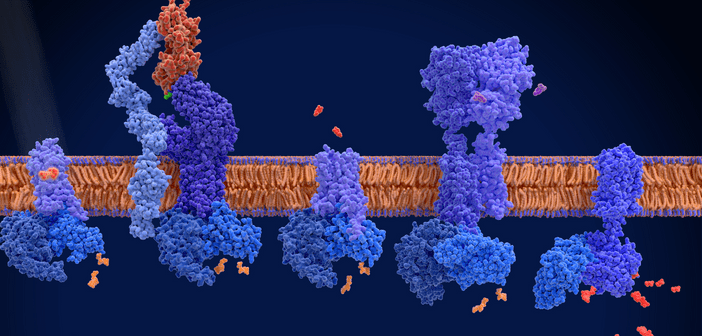Newly elucidated role of the GPCR protein possibly leads to more targeted therapeutics

Over 33% of drugs approved by the FDA function by focusing on a G protein-coupled receptor (GPCR). Results from a new study have revealed the role of the third intracellular loop in the signaling mechanism of GPCRs indicating the potential for more targeted approaches in drug development.
The GPCR protein plays a crucial role in cell signaling by transmitting signals from the external environment to the interior of cells. They can detect a wide range of signals from sources such as light, hormones and neurotransmitters. When a signal molecule binds to the GPCR on the cell surface, it triggers a cascade of events inside the cell, leading to various cellular responses, including gene expression, enzyme activity and the closing and opening of ion channels. Because of their vital role in cell signaling, GPCRs are the target of many drugs used in treating various diseases, including hypertension, asthma, pain and inflammation.
The human body has over 800 types of GPCRs that provide cells with information about the external environment to regulate their reactions. Most drugs bind to the outside of the receptor, but this often results in adverse side effects as different receptors can often appear similar in structure to one another.
Results from the study published in the journal Nature, Sivaraj Sivaramakrishnan, a professor in the College of Biological Sciences, University of Minnesota (MN, USA), details the role of GPCR’s third intracellular loop signaling mechanism, suggesting a paradigm shift for new therapeutics.
“Typical GPCR drugs act as on or off switches for cellular signaling outcomes,” said Sivaramakrishnan. “Drugs that leverage the loop effectively can act as signaling dimmer switches to more precisely control drug responses.”
The researchers established novel biochemical and biophysical tools, coupled with computational measurements by associates Ning Ma and Nagarajan Vaidehi at the City of Hope Cancer Center. The team analyzed how the third intracellular loop of the GPCR can change in shape or configuration as a result of the receptor signaling process.
The data revealed that the third loop performs as a gateway to ensure that receptors can trigger the correct type of G protein signaling at the correct strength. This in turn will result in fewer adverse side effects seen in the drug design process.
“A key advantage of this loop is that it is highly unique, even among closely related receptors, making it an outstanding drug target,” said Sadler. “Developing drugs through this newly discovered mechanism would allow for far more targeted therapeutics.”
Sources: Sadler F, Ma N, Ritt M, et al. Autoregulation of GPCR signalling through the third intracellular loop. Nature. 615, 734–741 (2023), https://www.eurekalert.org/news-releases/983054
